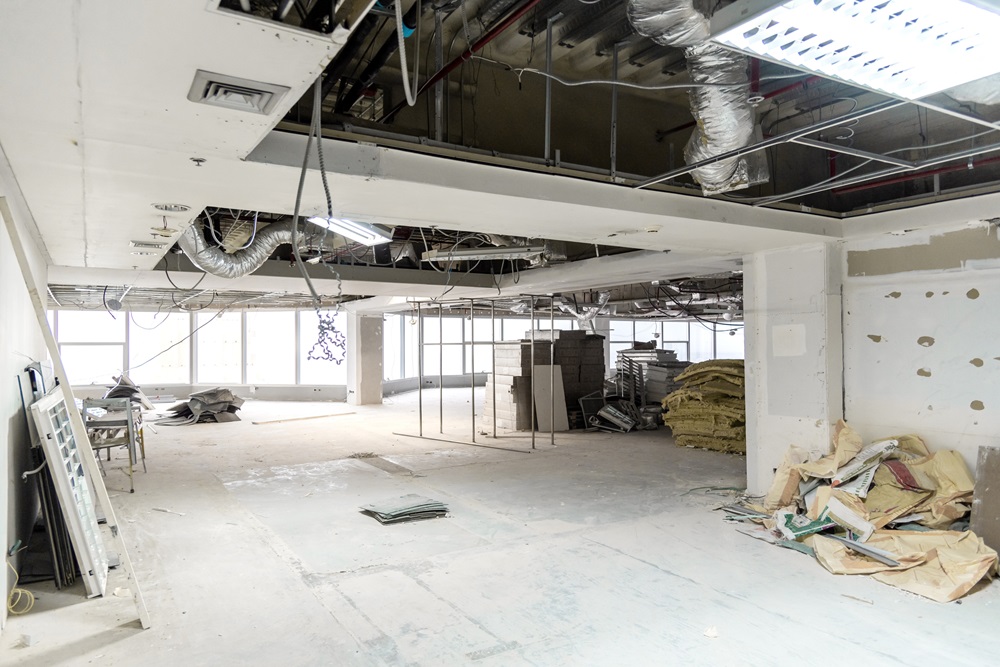Changing Your Space: What Modifications Are Permitted with Commercial Leases?
Businesses aren’t static things like stones sunk in a riverbed, impervious to the chaos swirling around them. Rather they are like the river itself. Sometimes their market share is little more than a thin trickle. Other times it’s a fast-moving torrent, catching up everything around it in its current. And still other times it glides on slow and wide and steady.
Of course, the changing nature of businesses as they expand and contract leads to changing needs, such as new strategies, shifting marketing — and new spaces in which to work. It’s the rare company that doesn’t periodically need new commercial lease space, but such changes invariably raise questions. What space modifications under commercial leases are typically allowed? What kinds of tenant improvements can you reasonably expect to perform? Will your landlord alter the space for you? Read on to learn more of the essentials about allowed modifications under a commercial lease.
Understanding the Extension of Your Lease
 Before we start digging into the fine details of navigating commercial space renovations, we need to understand one important fact: making modifications under a commercial lease all depend on the language of the lease itself. In other words, most everything is open for negotiation, and it doesn’t make much sense to speak of “standard” arrangements when discussing commercial space improvements. You and your landlord have to come to an agreement first.
Before we start digging into the fine details of navigating commercial space renovations, we need to understand one important fact: making modifications under a commercial lease all depend on the language of the lease itself. In other words, most everything is open for negotiation, and it doesn’t make much sense to speak of “standard” arrangements when discussing commercial space improvements. You and your landlord have to come to an agreement first.
One of the best times to nail down the details around alterations under a commercial lease is during your lease-extension period. “What exactly is a lease extension?” you ask. If your lease has begun to draw to a close and your landlord has decided that he or she would like to retain you in the property for a while longer, your landlord may extend the possibility of extending your current lease. This gives you the opportunity to have more time in your company’s current location under the same terms.
You don’t need extensive experience with commercial real estate to see the issue inherent with lease extensions: These agreements don’t modify the existing terms of your lease, meaning that nothing changes as far as tenant improvements are concerned. But that’s where amendments and addendums to your lease come into play.
Differences Between an Amendment and an Addendum
If you’ve entered into negotiations with your landlord regarding site alterations under a commercial lease and you’ve both reached an agreement, you’ll want to draft either an amendment or an addendum to your lease. Make sure you sign the correct one, though, because the specific legal instrument matters.
What’s the difference between the two? Contract-management-software firm Corridor Company explains that “an addendum usually contains items that were not included when the contract was being drafted. Addenda are modifications added to an existing agreement to add or change a few of its terms and conditions. It does not replace the original contract.”
A commercial lease amendment is different. It “attaches to the initial contract and alters the original terms or conditions. It does replace the specified portion of the original contract.” Which you should pursue depends on the language of your lease. For instance, if you want to make extensive changes without oversight and your original lease requires your landlord to sign off on the simplest tasks, you’ll want an amendment.
Define the Extent of your Changes (Minor or Extensive)
You don’t need to wait until you’re considering a lease extension to define the extent of your changes. In fact, it would be better to do so before you even sign your lease in the first place. Many leases will allow you to make minor changes, but major alterations will likely concern your landlords. There’s good reason for it, too. Extensive alterations run the risk of:
- Impacting future rentability
- Causing safety risks
- Disturbing other tenants in a multi-business complex
- Removing iconic distinguishing marks of a building
Coming to an agreement about just how much impact your renovations will have before you begin them is essential.
Tenant Space Modifications at Move-in
The move-in period is an ideal time to define the scope of your site modifications — and to perhaps get some concessions from your landlord. Landlords understand that few spaces are perfect right from the get-go, and they want to get you into their property. Many will willingly provide you with rent concessions or even perform some of the work for you in order to secure you as a tenant. However, they can’t do so if you’re unable to delineate your modification needs.
Tenant Space Modifications Under an Existing Lease
Sometimes your existing lease will permit you to make space alterations without reaching out to your landlord. As always, knowing what allowances the current legal language under which you’re operating remains king. Even if you can legally alter the property, you should remain aware of several potential pitfalls that could make your modification experience more onerous.
First, ensure that your renovations don’t run a high risk of damaging your property or the property of other tenants. Most leases will hold you liable for any such damage — and you can quickly rack up a lot of liability with just a mistake or two.
Second, understand who owns the renovations that you’re making. Some leases will allow you to retain them once your lease has run its course — and some transfer ownership to your landlord. If you’re installing pricey fixtures, having to hand them over if you shift your site could sting. The same thing holds true for removing any improvements, which might lead to a significant amount of future expense and labor.
Third, check that you really are in compliance with all of your lease’s requirements. Many leases include clauses allowing landlords to implement additional regulations of your space. Take care that you’ve reviewed all addenda and amendments prior to commencing work.
How to Renegotiate the Terms of a Commercial Lease
Getting your lease changed so you can rework your space isn’t that much different from any renegotiation. You should take a number of steps to increase your chances of success, including:
- Speaking with your landlord early and often
- Becoming literate with your lease’s current language
- Using professional legal counsel
- Providing your preferred legal language
- Offering applicable concessions
- Pointing out your history as a good tenant
What are My Legal Options as a Tenant?
Though we can’t provide legal advice, we can offer some general thoughts about your options as a tenant. Understand that you’ll have to adhere to the language of your lease no matter the circumstances as long as it’s legally enforceable. Also know that alterations are available so long as you and your landlord can reach an agreement. That’s why communication is more than merely a suggestion: It’s an essential part of the process.
Need help finding a good space with agreeable terms? Reach out to us. We can help you find a suitable location with the operational flexibility to meet your needs.


